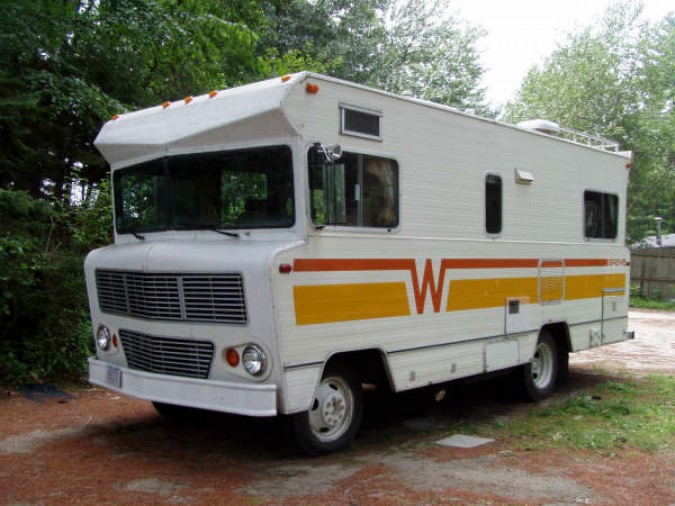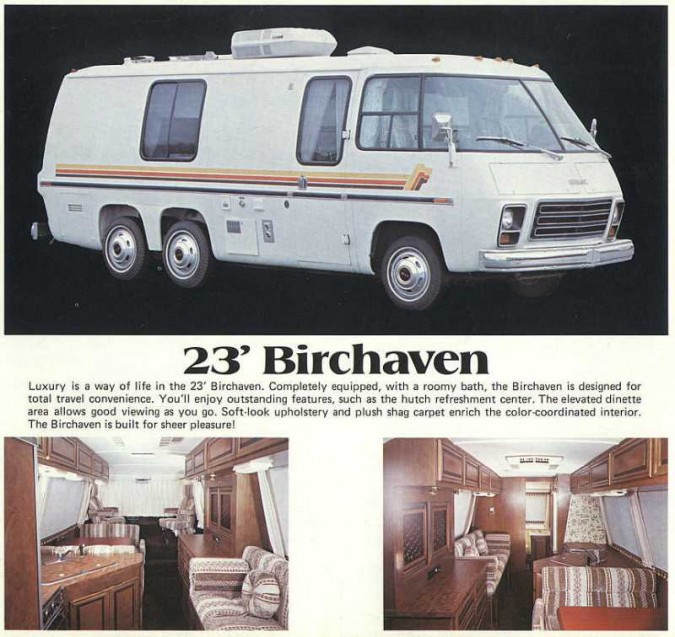My secret hobby of converting a bus to a motorhome
I have a hobby that I’ve been shy about disclosing. But, I have come to regard this hobby as vital research for a venture I would love to start, low cost housing built from ocean shipping containers. Such housing is available in Europe and many other parts of the world, but it’s rare in the United States.
My ‘secret hobby’ is converting commercial buses to self-contained residential dwellings on wheels, commonly referred to as bus conversions.
The link between bus conversions and shipping container homes is that both domiciles are long narrow boxes made of metal. A bus conversion is the more demanding housing type, because on a bus, one has to install all the utilities that a fixed dwelling can outsource to the city or town. So if I can build a bus conversion, I can build shipping container housing. This turns my interest in buses into legitimate research.
When I was a kid, I dreamed about camping in a motor home or trailer. My parents didn’t care for this idea, and as a family, we only went camping in tents.
One of the first motor homes I remember was the Winnebago Brave. This model had a distinctive silhouette unique to this model.
The next motor home I remember was the GMC motorhome. Years ago, my grandmother Elsie Battaglia owned a beach front house in Seal Rock, Oregon. Her next door neighbor bought a brand new GMC motor home, and I fell in love with it. I recall the price of $30,000 vividly, because when grandma sold her house a few years later, she got $25,000 for it. So this motor home cost more than a beachfront house did. The GMC motor home was very expensive when new, and today, restored models from that time also cost about $30,000 and can sell for over three times that if in really fine condition. What I liked about the GMC was its curvy and unified look. It was as far from a rolling box as anything other than an Airstream trailer. The GMC also had three axles, which made it look very serious, like a Greyhound bus. Very few other motor homes had or have three axles, and I know of no other motor homes as small as the GMC that have three axles. Although the GMC seemed huge to me when I was a kid, today it would be classified as a small motor home, at just 23 to 26 feet long, depending on the version.
I have a bus conversion that I bought already converted. It’s a 1967 MC-5a model from Motor Coach Industries, currently the largest manufacturer of commercial highway busses in the United States. I bought my conversion in 2001 from John Ridly of Santa Rosa, California. My dream at that time was to drive to New York City over a period of months to really see the country first hand. In 2002 I made the trip. I made the significant mistake of traveling in July and August, when it was just too hot to be traveling in the particular conversion I had bought. But I still enjoyed the trip, and I’m glad I took it. Fuel was only about $1.75 a gallon then, thankfully.
I videotaped the entire drive from San Francisco to New York City using a video camera I mounted in the passenger window. I stopped hourly to replace the Mini DV tape in my camcorder. I brought a global positioning receiver with me, and I videotaped the screen showing my location at the start and end of each video tape. I did this so I could plot the trip on a map one day.
I mounted the camera on a shock mount that I made to smooth out the image. I plan to edit the 90 hours of footage into a 91 hour movie I will post on this blog. This is a big project, and I’ve never watched the 90 hours of tape yet, so please don’t hold your breath waiting for the movie to appear here. I kept the camera rolling every minute I was driving, with the thinking that the tape may be very boring now, but very interesting far in the future, where people could see all the funny stores, price signs and driving habits of the day.
I was drained of energy when I returned from my two and a half month cross-country journey. It was just so hot that I couldn’t sleep some nights, as I could not run the generator through the night because it was not sound proofed, and it was located under the bed in the back of the conversion. I also did not have a ceiling fan, which would have helped a lot. I put the bus into storage for a couple of years after I got home, and it was covered with green moss when I finally took it out of storage and re-registered and insured it. It took two days to scrub clean. I moved it out from under the tree I had parked under, and now it does not get moss on it when parked for long periods.
When I met Monika, the woman I would later marry, I hesitated for a couple of months before I told her about my bus. I told her when we were staying at her parent’s vacation cabin three hours east of the Bay Area. I told Monika I had a ‘vacation home’ as well, but that it was on wheels. Thankfully, she wasn’t freaked out, and she agreed to go on trips with me. We went to Monterey, California and Yosemite National Park in California, among other destinations.
Fuel prices rose, and I felt guilty about driving a 40+ year old bus that gets just 6.4 miles to the gallon. Old buses have two-stroke engines, which are dirtier than modern four-stroke engines found in all current trucks and buses outside of the military, which still uses two-stroke engines because they are supposed to be more dependable in wartime because they more frequently contain no electronic controls that could be damaged by electronic warfare.
I decided to upgrade to a modern four-stroke engine bus with modern emission controls, and will write about the choice I made in an upcoming blog post.


